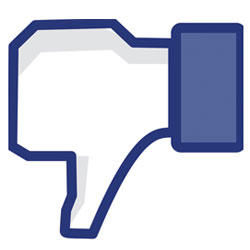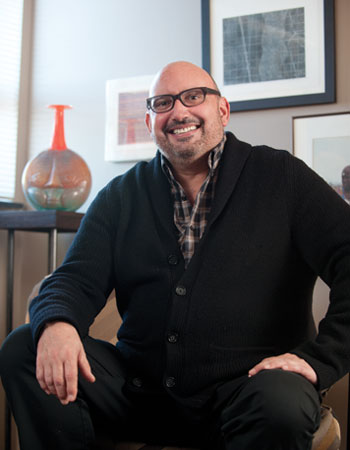by Kristi Reimer // Spring 2012
 It used to be that when you wanted to know what was going on in a friend’s life, you called that person on the phone, talked face to face, or you utilized a seemingly ancient communication network: you wrote a letter, licked a stamp, and dropped it in the mailbox. These days, a quick scan of your friend’s Facebook page will bring you reasonably up to date.
It used to be that when you wanted to know what was going on in a friend’s life, you called that person on the phone, talked face to face, or you utilized a seemingly ancient communication network: you wrote a letter, licked a stamp, and dropped it in the mailbox. These days, a quick scan of your friend’s Facebook page will bring you reasonably up to date.
If you’re really feeling motivated, you might leave a post on your friend’s wall or comment on a recent status update. The effort required is minimal. But the next time you run into that friend, you’ll be ready with an observation on the cuteness of his new grandchild or congratulations on her recent job promotion.
Social networking sites like Facebook and Twitter have revolutionized the way people communicate and connect with each other. The amount of personal information available or “shareable” with just a few taps of the keyboard, clicks of the mouse, or (ever-increasingly) touches of the screen is vast—and growing all the time. Facebook has topped 800 million users, while Twitter is at 200 million users and LinkedIn is at 135 million users, according to the sites themselves.
Not only is the number of social media users growing, so is the amount of time users spend on these sites. According to digital analytics website comScore, average Internet users in 2007 spent 8 percent of their online time with social media. In 2011, that number jumped to 16 percent, or twice as much time.
However, when users spend hours on social media sites, there are certain activities they’re not doing instead, whether those choices are conscious or not—and, assuredly, for most of us they’re not. So what kinds of trade-offs are people making with social media becoming so ascendant in their time and relationships? That’s what Perspectives set out to investigate.

It’s addictive
Social media is enabling some people to engage in behavior they might not otherwise engage in. David Donovan, Ph.D. ’89, is a psychotherapist with Behavior Consultants in Kansas City, Mo. Over the last several years, he has seen patterns emerge among his clientele that are rooted in social media usage—patterns that can damage their emotional health. For one thing, social media sites can be addicting. “People spend hours on Facebook, and they’re not engaging in healthy behavior,” Donovan says. “For example, it’s too easy to stalk people, such as an ex-husband or ex-wife.”
Even when they’re not enabling digital stalking, Donovan says social media sites, Facebook in particular, allow people to think they’re connecting with others meaningfully when in fact they’re neglecting human contact. Facebook didn’t cause the problem, he says, it simply masks the fact that most people’s lives are so busy and overbooked they don’t have time for meaningful relationships. “It’s easy to say, ‘I’m not going to have dinner with my friend because I already know what he’s up to through Facebook,’” Donovan says.
In fact, Donovan compares compulsive social media use to pornography addiction. Porn addicts become so accustomed to the neurological and psychological experience of watching explicit material that they’ve almost rewired their brains. “There’s a parallel with Facebook,” Donovan says. “We can become so used to the Facebook connection that we lose the ability to relate interpersonally. It changes the way we think about ourselves.”
And Twitter feeds a whole different kind of relational dysfunction—one focused on celebrity culture. “The whole thing with Demi Moore and Ashton Kutcher tweeting about their breakup—it was tacky and weird. And sad,” Donovan says. “I have a patient who follows a television star on Twitter, and there’s a false sense of relationship there, of closeness and being in the know.”
In the end, exchanging authentic in-person relationships for digital approximations is a losing proposition, Donovan says. He uses his own profession as an analogy. In psychotherapy, the curative element is the relationship between therapist and client. When two people are in a room talking face to face, they’re being as real and honest as two people can be. “It wouldn’t work over the phone, by email or on Facebook,” Donovan says. “It’s too removed. We get cues that are visual and auditory, and these cues help us interpret words correctly.”
Plus, depressed people spend a lot of time on the computer, and spending a lot of time on the computer breeds depression—a vicious cycle. When Donovan senses that any computer addiction is hindering his patients’ emotional equilibrium, he advises them to shut it down. “Look at your email and favorite websites twice a day, respond to the important things and ignore the unimportant things,” he says. “And set a timer for 15 minutes. When it goes off, you’re done.”
It also helps for social media users to be mindful of how they’re spending their time and make decisions that foster a sense of meaning and significance. Maybe someone spends three hours on Facebook when he or she could be volunteering to plant trees, or exercising, or going to an art museum. “Anything that takes physical volition tends to get put on the back burner,” Donovan says. “But it’s important not to give those things up.”
